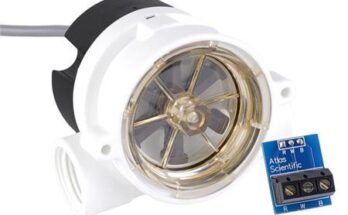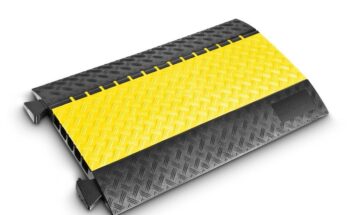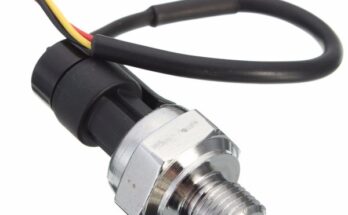Interlocks are known as safety devices that help ensure machine safety by preventing any inappropriate actions and also help to bring it to a safe condition if you make a wrong move on the machine. Therefore, we can say that interlocks are devices that help the users prevent making any unsafe actions or minimize the degree of harm caused by the unsafe action by bringing the machine back into a safe condition. For example, you install an interlock on a machine to prevent its function when the guard is removed or to make it non-operational when a dangerous situation occurs. Safety interlocks have many additional or combined features to reduce hazards and ensure the safety of machines.
What are Industrial Interlocks?
Industrial interlocks are the same safety devices identified as surface-mounted outlet sockets manufactured from a hard plastic casing with a socket cover. They are called industrial interlocks because they are designed for safety purposes in industrial applications and can also be used for commercial applications.
They work through a mechanical interlock providing just the right amount of safety. This will allow you to operate safely while preventing unsafe actions such as preventing the switch from closing if the plug is not installed, extracting the plug if the switch is closed, etc.
Materials of Industrial Interlocks
Various materials are used to manufacture the housings of industrial interlocks, such as rubber and thermoplastic, aluminium, or PBT. Therefore, they are manufactured to be strong, durable, and insulated. They may have a polyurethane gasket between the lid and the base. The units are waterproof.
Standards of Interlocks
Various safety standards have been set up for interlock guarding and interlock controls. The American National Standards Institute defines some standards for these safety devices that must be considered while working with them. Some of the standards include:
- ANSI B11.19, which is the Performance Criteria for Safeguarding
- ANSI/ RIA R15.06 indicates the Safety Requirements for Industrial Robots and Robot systems.
- ISO 14119 indicates the Safety of Machinery-Interlocking Devices Associated with Guards.
Types of Interlocks
There are two basic types of interlocks: safe and non-safe. The system may require either of these.
Safety Interlocks
Safety interlocks have a redundant design. It is important to read instructions or manuals before using the safety interlocks and determine what type of systems require these. The safety interlock expresses how programming instructions may appear. As the name indicates, these interlocks are made to prevent people or objects from any harm while working with a machine. For example, a safety fence can protect people by keeping them out of moving objects.
When you open the fence gate of the circuit, the safety circuit cannot be reset because it waits till the circuit gates are closed. This prevents individuals from running into a robot cell while it is operational.
Non-Safety Interlocks
This type of interlock is relatively simple. Non-safety interlocks are designed to protect specific equipment or some unintended applications. Non-safe interlocks are then further divided into three types known as mechanical, logical, or electrical interlocks.
Mechanical Interlocks
These are the type of interlocks that form physical connections with other devices to prevent unwanted or harmful actions. Examples can be found in the car steering wheel or trap key system.
Logic Interlock
Logical interlocks work on the bases of logic. There must be some instructions or variables that must be accurate to give results. These interlocks are primarily used where you cannot connect these devices electrically or mechanically, or at least it is not easy.
Electrical Interlock
This interlock is designed to prevent the electrical flow between two devices. Electrical interlocks utilize typically closed and usually open contacts to restrict the device from operating when in danger. You can find examples in relays and contactors.
Conclusion
From the above information, it is concluded that interlocks are safety devices that prevent harmful actions in machines to protect the people and the machine from getting damaged. These are primarily used in the industrial sector as well as the commercial sector. Some safety standards must be followed while working with these devices. You can choose the most suitable applications with different types and varieties. Whether it is a safe or unsafe interlock, it is essential to understand its working mechanism before using them. With such benefits of safety, these devices effectively ensure the safety of people and machinery, reducing damage risks and costs.





